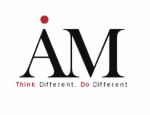In an era where operational efficiency dictates competitive advantage, organizations are continuously exploring technologies that reduce costs and streamline workflows. Radio Frequency Identification (RFID) has emerged as a transformative solution in various sectors, particularly in uniform and laundry operations. By enabling real-time tracking, automating data collection, and enhancing inventory visibility, RFID reshapes the economics of textile and garment management. As facilities ranging from hospitals and hotels to manufacturing units deploy uniforms en masse, the need for cost-effective and reliable tracking systems has never been greater.
This article delves into the economic implications of integrating RFID systems into uniform and laundry management. We will examine the traditional challenges these operations face, the ways RFID technology mitigates them, and the tangible return on investment (ROI) businesses can expect. Further, the article explores sector-specific benefits, implementation considerations, and future trends, offering a comprehensive view of how RFID is not just a technological upgrade, but a strategic economic asset.
Understanding the Costs of Traditional Uniform and Laundry Management
Uniform and laundry operations have long been plagued by inefficiencies. Traditional manual systems are labor-intensive and susceptible to errors, from inaccurate counts and misplaced items to delays in processing. These inefficiencies translate into significant operational costs. Time-consuming inventory checks, excessive textile loss, and overstocking to buffer uncertainties are just a few examples of waste that organizations routinely absorb.
Moreover, the lack of real-time data complicates decision-making. Managers often operate in the dark, unable to forecast inventory needs accurately or trace accountability in case of garment loss. This opacity not only hinders budget control but also raises compliance concerns in industries where hygiene and safety are paramount. In such settings, the economic burden includes both tangible costs and intangible liabilities, such as reputational damage and customer dissatisfaction.
RFID Technology: A Cost-Efficiency Catalyst
RFID technology functions by embedding small tags into garments, which can be read wirelessly by RFID scanners. Unlike barcodes, RFID does not require line-of-sight and can scan multiple items simultaneously, drastically reducing the time required for inventory checks. Each RFID tag carries a unique identifier, enabling granular tracking of individual garments through every stage of the laundering cycle.
From an economic standpoint, this automation translates into substantial labor savings. Fewer personnel are needed for tasks like sorting, inventory management, and auditing. Additionally, RFID minimizes the need for buffer stock, as real-time data ensures optimal inventory levels. Organizations can redirect resources toward value-adding activities rather than mundane logistical tasks.
Furthermore, RFID enhances asset utilization. By providing precise data on garment circulation and wear, it enables predictive maintenance and better lifecycle management. This reduces premature disposal and replacement costs, further strengthening the economic case for RFID adoption.
Quantifying ROI: Tangible and Intangible Gains
The return on investment in RFID systems can be quantified through several metrics. Direct cost savings arise from reduced labor requirements, decreased garment loss, and lower inventory holding costs. A typical facility may see garment loss reductions of up to 30%, with inventory accuracy improving to over 98%. These improvements alone can justify the initial investment within a few years.
Indirectly, RFID contributes to better service quality and compliance. Faster processing times and improved inventory accuracy enhance customer satisfaction and employee morale. Moreover, detailed tracking helps meet regulatory standards in sectors like healthcare, where garment sterilization and traceability are critical.
The intangible benefits, though harder to quantify, are equally significant. Enhanced operational transparency empowers strategic decision-making, while improved accountability reduces internal friction. These outcomes create a more resilient and agile organization, better positioned to adapt to changing market demands and operational challenges.
Sector-Specific Economic Benefits
Healthcare
In hospitals, uniform management is closely tied to hygiene protocols and regulatory compliance. RFID ensures that garments are correctly laundered, assigned, and replaced, thereby safeguarding patient and staff safety. Economically, this reduces liability risks and minimizes stock-outs, which could otherwise disrupt operations and require costly emergency procurement.
Hospitality
Hotels and resorts manage thousands of linen and uniform items daily. RFID enables precise inventory control, ensuring that the right items are available at the right time. This reduces overstocking and loss, both of which significantly impact the bottom line. Furthermore, RFID systems enhance guest satisfaction by ensuring consistent service quality.
Manufacturing and Industry
In industrial settings, uniforms often serve protective functions. RFID facilitates timely maintenance and replacement, reducing downtime and enhancing worker safety. This not only improves productivity but also reduces compensation and liability expenses associated with workplace accidents.
Implementation Considerations and Cost Structures
While the benefits of RFID are compelling, the implementation process involves several cost components. These include the purchase of RFID tags and readers, software integration, staff training, and system maintenance. Initial costs can be substantial, especially for large-scale operations, but these are offset by long-term savings and efficiency gains.
A phased implementation approach can mitigate upfront costs. Starting with high-value or high-loss items allows organizations to test the system’s efficacy before scaling. Additionally, many RFID vendors offer leasing or service-based models that reduce capital expenditure and align costs with usage.
Organizational readiness is another critical factor. Success depends not only on technology but also on staff buy-in and process adaptation. Comprehensive training and clear communication are essential to ensure smooth transition and sustained ROI.
Long-Term Economic Impact
The long-term economic impact of RFID in uniform and laundry operations extends beyond cost savings. Over time, organizations accumulate valuable data that can inform strategic decisions. Usage patterns reveal insights into staffing needs, laundering frequency, and garment lifecycle, enabling continuous improvement.
Furthermore, RFID systems are scalable and adaptable. As organizations grow or diversify, their RFID infrastructure can accommodate new garments, locations, and workflows without major reinvestment. This scalability enhances the technology’s economic viability over the long run.
In markets where competition is fierce, the ability to maintain lean operations while delivering high service quality becomes a critical differentiator. RFID empowers organizations to achieve this balance, supporting sustainable growth and profitability.
RFID Uniform Management in Practice
Adoption of rfid uniform management is growing across industries for its clear financial and operational benefits. Facilities that implement these systems report not only reduced shrinkage and labor costs but also improvements in compliance and user accountability. The ability to track individual garments through laundering cycles adds a layer of data transparency that traditional systems simply cannot provide.
Moreover, RFID systems enhance audit readiness and inventory visibility, streamlining reporting and reducing administrative burdens. These efficiencies compound over time, turning what may initially seem like a high-tech investment into a practical cost-control mechanism.
Integrating RFID with Laundry Inventory Management
The intersection of RFID technology with laundry inventory management yields even greater efficiencies. Automated tracking ensures that items move seamlessly through wash, dry, fold, and dispatch stages without manual intervention. This reduces turnaround times and prevents bottlenecks, a common issue in large-scale laundry facilities.
Enhanced visibility into garment status at each stage allows for better resource planning and load balancing. Managers can predict maintenance needs, adjust staffing, and optimize equipment usage, all based on real-time data. These capabilities improve overall throughput and service reliability, which in turn enhance client retention and operational scalability.
Conclusion
RFID technology represents a paradigm shift in how organizations manage uniforms and laundry inventory. By automating labor-intensive tasks, reducing losses, and providing actionable insights, RFID transforms what was once a cost center into a source of strategic value. Though the initial investment may be significant, the long-term economic benefits—both direct and indirect—are profound.
As industries become increasingly data-driven, the integration of RFID in uniform and laundry operations is not just a technological upgrade but an economic imperative. With careful planning, stakeholder engagement, and phased implementation, organizations can harness the full potential of RFID to enhance efficiency, compliance, and profitability for years to come.


